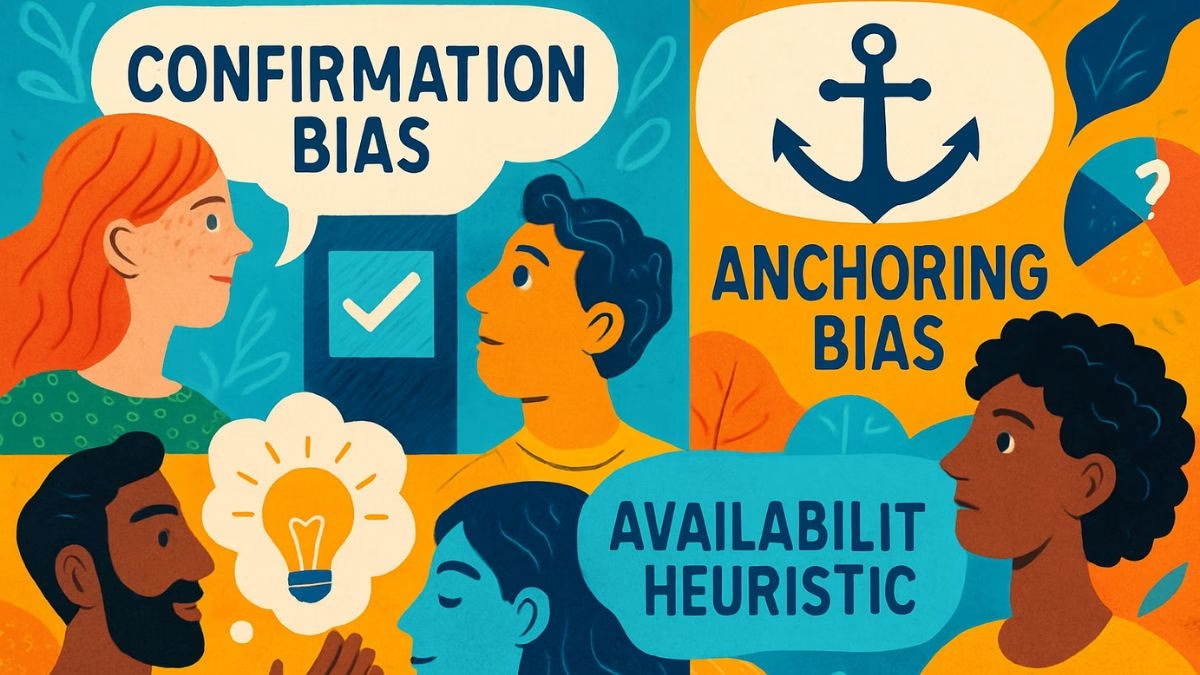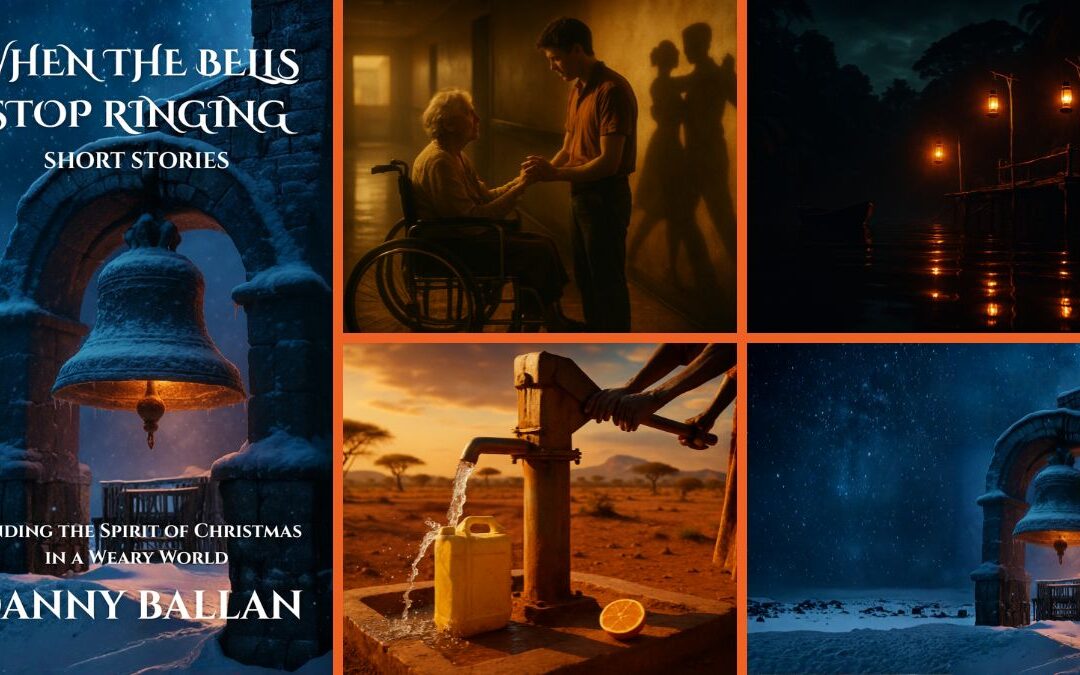Escaping Your Own Mind Traps
Have you ever wondered why you sometimes make irrational decisions, even when you have all the facts? The reason often lies in a series of invisible mental shortcuts our brains use to navigate the complexities of daily life. These shortcuts, known as cognitive biases, are like glitches in our thinking that can lead us to misinterpret information and make flawed judgments. They are a fundamental part of being human, but being unaware of them can leave us vulnerable to manipulation and poor decision-making.
This “Mind Traps” quiz is designed to be your personal guide to the fascinating world of cognitive biases. Through a series of relatable, everyday scenarios, you’ll learn to identify some of the most common biases that affect us all, from the way we interpret news to the reasons we stick with a bad investment. This isn’t just a test; it’s a journey into self-awareness. Each question and its detailed feedback will act as a mini-lesson, equipping you with the knowledge to recognize these biases in yourself and others. By the end, you’ll be better prepared to challenge your own assumptions, think more critically, and make more conscious, informed decisions.
Learning Quiz
This is a learning quiz from English Plus Podcast, in which, you will be able to learn from your mistakes as much as you will learn from the answers you get right because we have added feedback for every single option in the quiz, and to help you choose the right answer if you’re not sure, there are also hints for every single option for every question. So, there’s learning all around this quiz, you can hardly call it quiz anymore! It’s a learning quiz from English Plus Podcast.
Quiz Takeaways | Hacking Your Own Brain
Hello and welcome. If you’ve just finished our “Mind Traps” quiz, you might be feeling a bit strange, as if you’ve just discovered a hidden operating system running in the background of your mind. That’s a perfect way to think about cognitive biases. They are not signs that we are unintelligent or broken; they are evidence that our brains are incredibly efficient. To deal with the billions of bits of information we face every day, our brains have evolved to take shortcuts. These shortcuts are heuristics, or mental rules of thumb. Most of the time, they work perfectly. But sometimes, they lead to systematic errors in thinking, and those errors are what we call cognitive biases. Learning about them is the first step toward outsmarting them.
Let’s start with the biases that affect how we process information and form beliefs. The most famous is Confirmation Bias. Think of your brain as a lawyer. Once it has a client—a belief—its job isn’t to find the objective truth; its job is to build the strongest possible case for its client. It will seek out confirming evidence and ignore or discredit anything that contradicts it. This is why it feels so good to read an article that agrees with us and so irritating to read one that doesn’t. A related phenomenon is the Baader-Meinhof Phenomenon, or frequency illusion. When you learn a new word or buy a new car, you suddenly see it everywhere. The word isn’t more frequent; your brain has just been told to flag it. You’ve given your internal lawyer a new case to track.
Now let’s talk about the biases that affect our decision-making, especially when it comes to value. The Anchoring Bias is one of the most powerful. The first piece of information we receive acts as a mental anchor that is incredibly difficult to pull up. It’s why a discounted item seems like a great deal, even if the original price was artificially inflated. The initial price becomes the anchor against which we judge the final price. This is often combined with the Framing Effect, where the exact same information presented differently leads to wildly different choices. “90% survival rate” feels safe and reassuring, while “10% mortality rate” feels terrifyingly risky. The facts are identical, but the emotional frame dictates our decision.
Then there’s the money we’ve already spent. This is the Sunk Cost Fallacy. Our brains hate the idea of waste. So, we continue to invest time, money, or effort into a failing project, a bad relationship, or a broken-down car, not because it’s a rational choice for the future, but because we can’t stand the thought of our past investment being “wasted.” It’s a trap that keeps us tied to the past. This is different from the IKEA Effect, which is about the value we place on things we’ve created. The effort we sink into building that bookshelf makes us value it more, an effect that marketers have learned to exploit.
Next, let’s look at social biases—the shortcuts we take when thinking about ourselves and others. The Halo Effect is when one positive trait, like physical attractiveness or charisma, makes us assume a person has other positive traits, like intelligence and kindness. It’s a mental shortcut that saves us the effort of judging someone on multiple dimensions. When we judge people’s actions, we fall into the Fundamental Attribution Error, where we attribute their behavior to their personality, not their situation. Someone cuts you off in traffic, and they are a terrible person. But when we do it, it’s because we’re late for an important meeting. This is the Actor-Observer Bias in action: for others, it’s their character; for us, it’s the context.
When it comes to ourselves, our brains are our biggest fans. The Self-Serving Bias is our tendency to take credit for our successes but blame our failures on external forces. It’s a powerful ego-protection mechanism. This is related to the famous Dunning-Kruger Effect, where people with the least competence in an area are often the most overconfident. They don’t just lack the skill; they lack the skill to even recognize their own incompetence.
Finally, there are the biases that warp our perception of risk and reality. The Availability Heuristic is our tendency to judge the likelihood of an event by how easily an example comes to mind. We fear plane crashes more than car crashes because the images of plane crashes are more vivid and dramatic in our memory, making them feel more common than they are. This is amplified by the Negativity Bias, an evolutionary hangover that makes our brains pay more attention to bad news and negative experiences than positive ones.
So, what can we do? We can’t simply turn off these biases. They are part of our brain’s wiring. But by knowing they exist, we can pause and ask ourselves questions. Is this my opinion, or am I just looking for information to confirm it? Am I being influenced by the first price I saw? Am I continuing down this path because of the money I’ve already spent? Am I judging this person on one trait, or am I seeing the whole picture? This habit of metacognition—of thinking about our thinking—is the key. By learning the names of these mind traps, you’ve been given the map to spot them. And spotting the trap is the first and most important step to avoiding it.










0 Comments